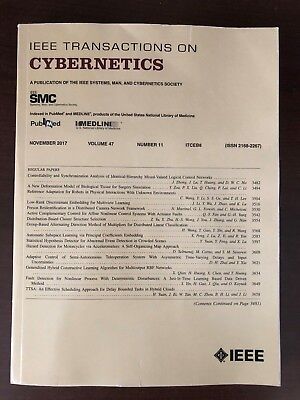OStr-DARTS:基于操作强度的可变神经架构搜索
IF 9.4
1区 计算机科学
Q1 AUTOMATION & CONTROL SYSTEMS
引用次数: 0
摘要
可微分架构搜索(DARTS)是一种很有前途的有效神经架构搜索技术,它主要包括两个步骤来寻找高性能架构。首先,通过梯度下降优化由混合运算组成的 DARTS 超网。其次,通过选择对超网络贡献最大的操作来构建最终架构。虽然 DARTS 提高了神经架构搜索(NAS)的效率,但它也存在众所周知的退化问题,可能导致架构退化。现有研究主要将退化问题归咎于其超网优化的失败,而很少关注其选择方法。在本文中,我们不再采用广泛使用的基于幅度的选择方法,而是提出了一种基于操作强度的新标准,该标准通过操作对最终损耗的影响来估算操作的重要性。我们的研究表明,使用提出的标准可以有效解决退化问题,而无需对超网优化进行任何修改,这表明基于幅度的选择方法可能是导致 DARTS 不稳定的关键原因。在 NAS-Bench-201 和 DARTS 搜索空间上的实验表明了我们方法的有效性。本文章由计算机程序翻译,如有差异,请以英文原文为准。
OStr-DARTS: Differentiable Neural Architecture Search Based on Operation Strength
Differentiable architecture search (DARTS) has emerged as a promising technique for effective neural architecture search, and it mainly contains two steps to find the high-performance architecture. First, the DARTS supernet that consists of mixed operations will be optimized via gradient descent. Second, the final architecture will be built by the selected operations that contribute the most to the supernet. Although DARTS improves the efficiency of neural architecture search (NAS), it suffers from the well-known degeneration issue which can lead to deteriorating architectures. Existing works mainly attribute the degeneration issue to the failure of its supernet optimization, while little attention has been paid to the selection method. In this article, we cease to apply the widely-used magnitude-based selection method and propose a novel criterion based on operation strength that estimates the importance of an operation by its effect on the final loss. We show that the degeneration issue can be effectively addressed by using the proposed criterion without any modification of supernet optimization, indicating that the magnitude-based selection method can be a critical reason for the instability of DARTS. The experiments on NAS-Bench-201 and DARTS search spaces show the effectiveness of our method.
求助全文
通过发布文献求助,成功后即可免费获取论文全文。
去求助
来源期刊

IEEE Transactions on Cybernetics
COMPUTER SCIENCE, ARTIFICIAL INTELLIGENCE-COMPUTER SCIENCE, CYBERNETICS
CiteScore
25.40
自引率
11.00%
发文量
1869
期刊介绍:
The scope of the IEEE Transactions on Cybernetics includes computational approaches to the field of cybernetics. Specifically, the transactions welcomes papers on communication and control across machines or machine, human, and organizations. The scope includes such areas as computational intelligence, computer vision, neural networks, genetic algorithms, machine learning, fuzzy systems, cognitive systems, decision making, and robotics, to the extent that they contribute to the theme of cybernetics or demonstrate an application of cybernetics principles.
 求助内容:
求助内容: 应助结果提醒方式:
应助结果提醒方式:


